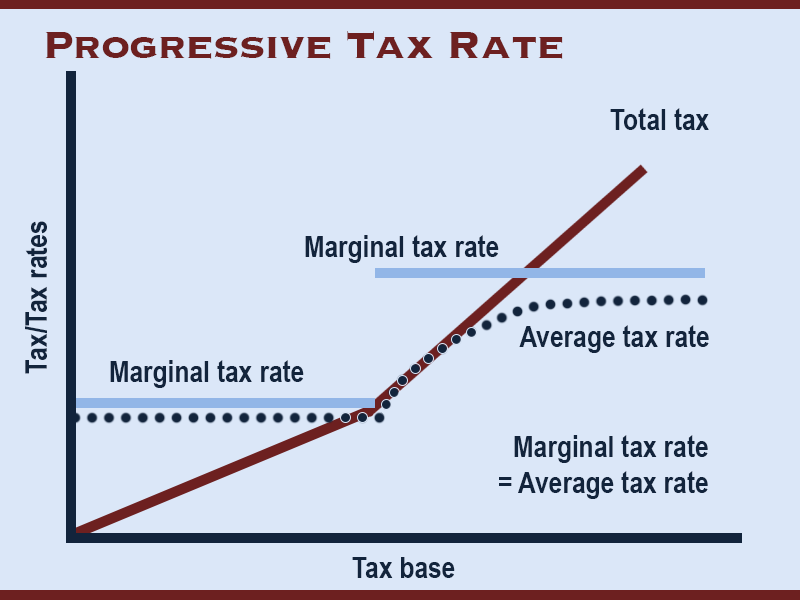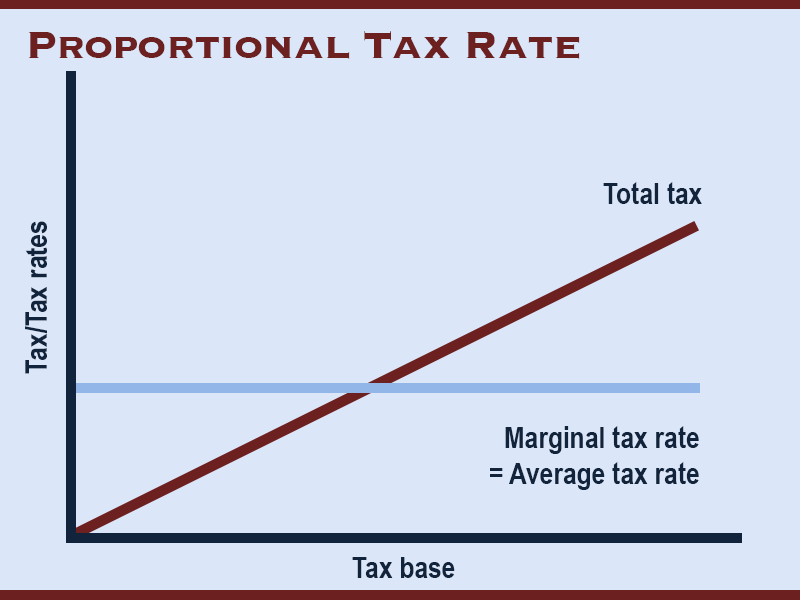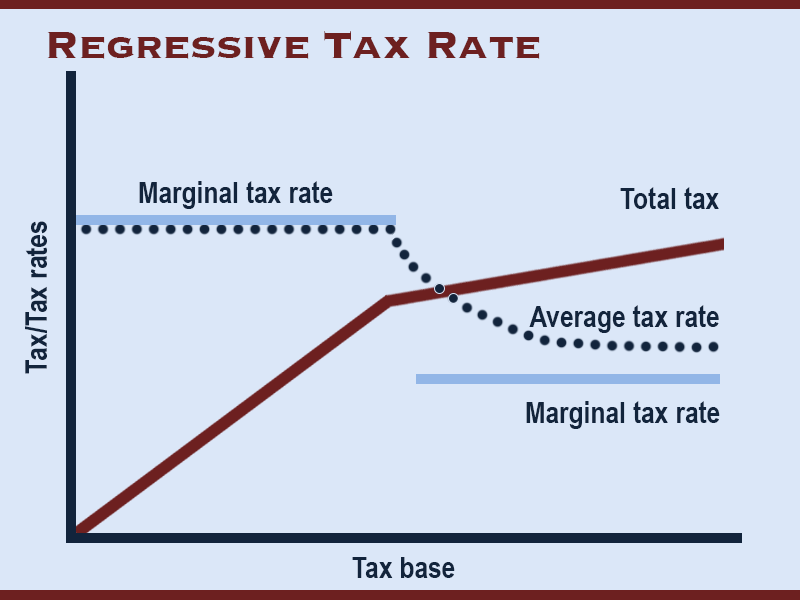Main Content
Lesson 1: An Introduction to Tax
Vertical Equity: Progressive, Proportional, or Regressive
You will often hear politicians and policymakers describe taxes as progressive, proportional, or regressive, which describe the vertical equity of a tax.

Progressive Tax
A progressive tax (Figure 1.2) is one in which higher income taxpayers pay a higher percentage of their income than do lower income taxpayers. This is the justification used for our current individual income tax rates, which (for 2022) start at 10% for the lowest income taxpayers and rise to 37% for the highest income taxpayers.

Proportional Tax
A proportional tax (Figure 1.3) is one in which higher income taxpayers pay the same percentage of their income as lower income taxpayers. Some examples of this are the corporate tax rate (21% in 2022) and sales tax.

Regressive Tax
A regressive tax (Figure 1.4) is one in which higher income taxpayers pay a lower percentage of their income than do lower income taxpayers. An example of this is the social security tax, which is only imposed on earned incomes up to $147,000 (the 2022 amount). Any earnings above that amount pay zero social security tax, and interest and dividends, which are mostly earned by higher income taxpayers, are not subject to this tax.
